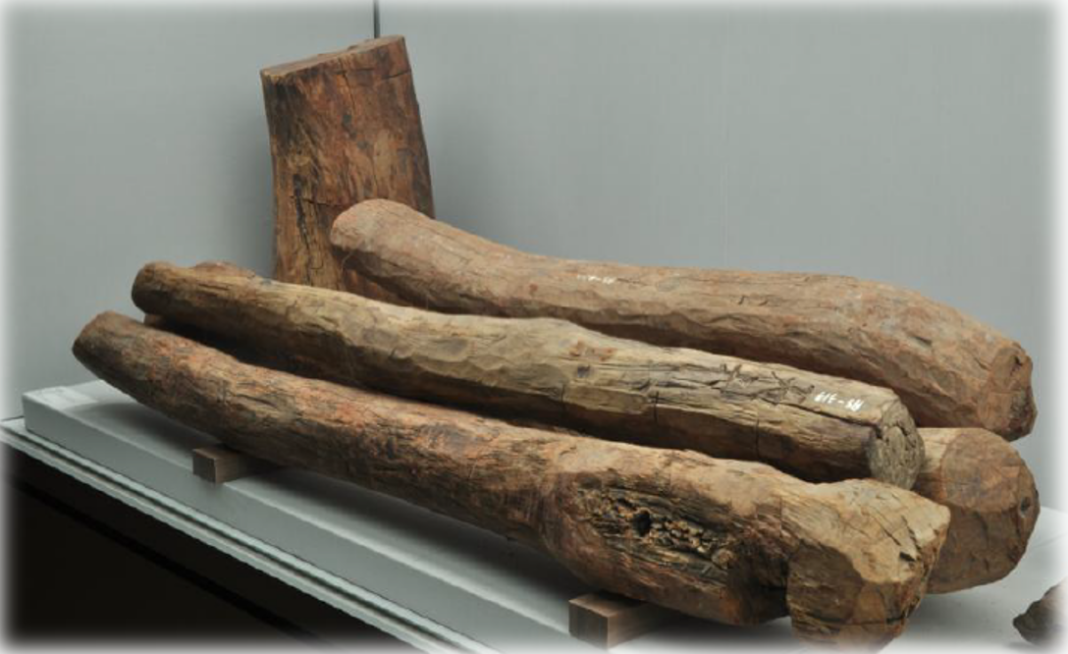By Prof. Richard T. Griffiths
The Silk Road Virtual Museum (SRVM) has two routes – overland and by sea. For the maritime routes, in addition to the land-based cultural artefacts, I want to feature shipwrecks, especially those with intact cargoes. Unlike the scattered pieces in museums and private collections, a ship’s cargo gives an accurate time-shot of the volumes and nature of traded goods. Moreover, unlike land sites that are reused and reinvented over time, a wreck captures the essence of life and culture of a community the moment of its loss. Researching for the SRVM Beijing (1271-1368) site, which will be the third site added to the museum, I came across the Shinan shipwreck. Its story will explain why I want to feature it in the Museum.
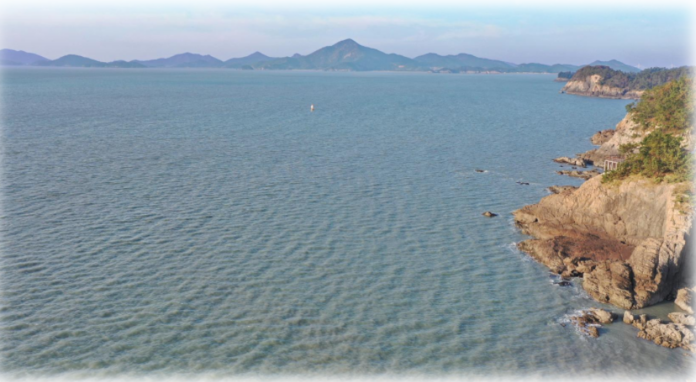
In 1323CE a Chinese trading vessel left the port of what is now the port of Ningbo on the Yangtze River, destined for the port of Hakata, now Fukuoka, in Japan. It never arrived. It was caught in a storm off the south western coast of Korea and sank without trace. For over 600 years the wreck lay undiscovered, twenty metres below the waves. In 1975 a fisherman and his son found six pieces of pottery caught in their nets which turned out to be ancient Caledon vases, characterised by their blue-green glaze. So began the rescue of one of the most complete, intact consignments of trade goods from the 14th century.
For the next nine years a team of archaeologists worked on the wreck to salvage what they could of the vessel and its cargo. They could only work in the summer, and could only dive for an hour a day just as the tide was turning.
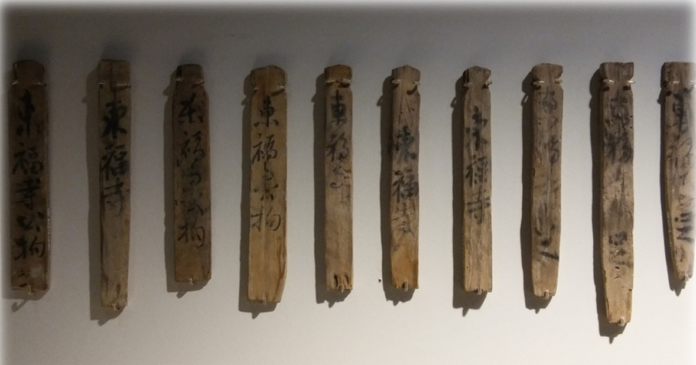
The archaeologists knew when it sailed because they could decipher eight wooden tags found in the vessel, with the words “Zhizhi Sannian” – The third year of Zhizhi Period – in other words 1323, written on them, which indicated the date of loading for shipment. There were more than three hundred other tags indicating the owners or consignees of the various cargoes. All the goods were destined for Japan.
They knew that the ship was Chinese because of its construction and the origin of the ship’s timbers. It was 32 metres long and 10 metres wide and had a cargo capacity of some 140 tons. The hull was divided into eight holds for carrying the cargo, with the bulkheads also offering the vessel much needed structural stability. It was from this information that scientists were able to construct a scale model of the ship.
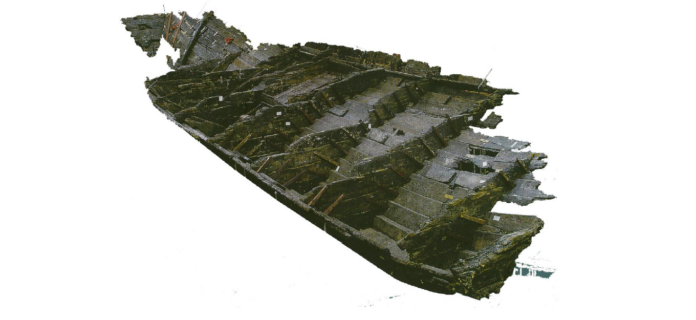
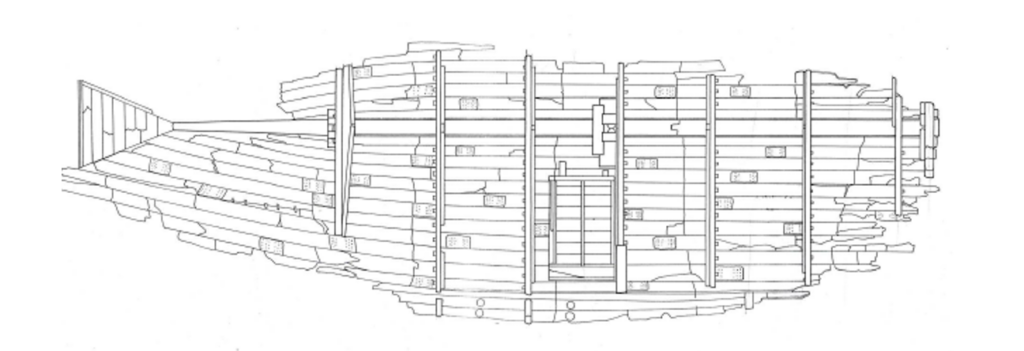

At the middle of the ship, at the bottom, the archaeologists recovered 28 tons of silver coins packed into 470 boxes. Some of the coins dated back to the first century CE. These had been obviously placed there to increase the vessel’s stability but old Chinese coins also found a ready demand in Japan where they could be smelted into other objects.
Those were not the only coins. The archaeologists also found one or two coins in most of the jars and packing cases. It was a traditional practice to bring good-luck. They also found some peppercorns in many of the artifacts, placed there for the same reason.
Above the coins, and between the boxes, they found over 1,000 pieces of red sandal wood, each between one and two metres long. The wood served as dunnage, preventing the shifting of the cargo. However, the wood was expensive and it had originated in South East Asia or even as far away as India. It had been loaded onto the ship in China, along with the other cargo (otherwise it could not be underneath) as was probably intended to be used in high quality furniture or to be carved into Buddhist statues.
The rest of the cargo, which comprised over 20,000 pieces of ceramics and more than 700 metal objects was placed on top, much of it in wooden chests. This was the earliest evidence of the use of packing cases in Asian trade. Most of the chests had disintegrated but some had survived. An analysis of the wood from which they were made suggested that the majority originated in Japan rather than China. Tree-ring dating showed that the youngest wood dated from 1316. The lid on one of the boxes had squares drawn upon it, for playing the game of wéi qí, better known in English as ‘Go’.
Covering all the cargo, was a deck which would protect the cargo and to allow people to walk freely. And protect the cargo it did since, when the ship sank, the decking kept to cargo on board for long enough to allow it to become waterlogged and not to float away. This is why so much remained intact and this is what (some of) it looked like:
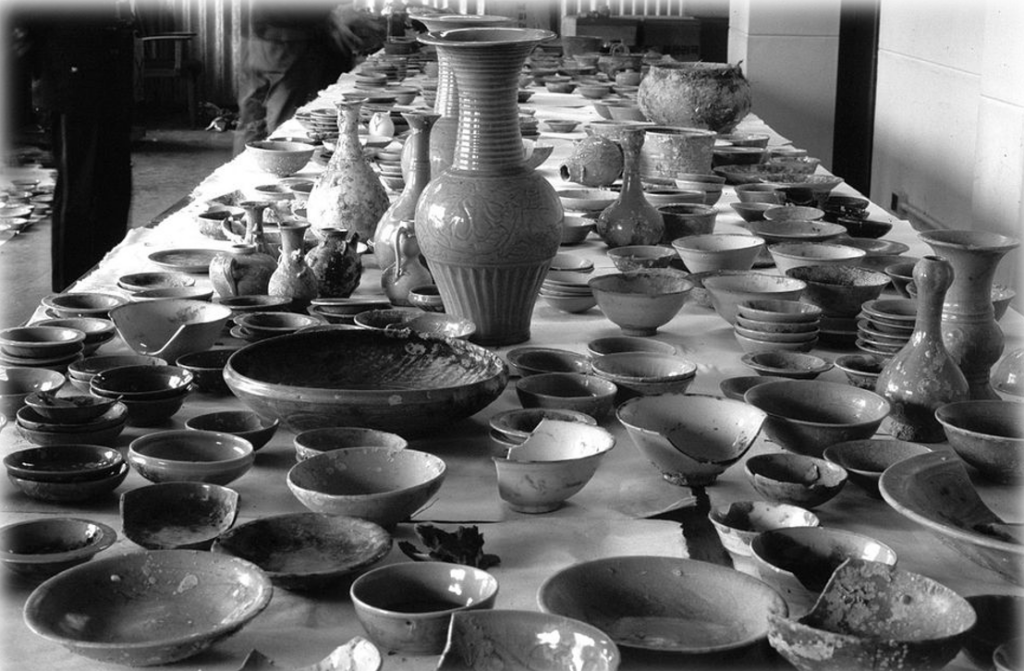
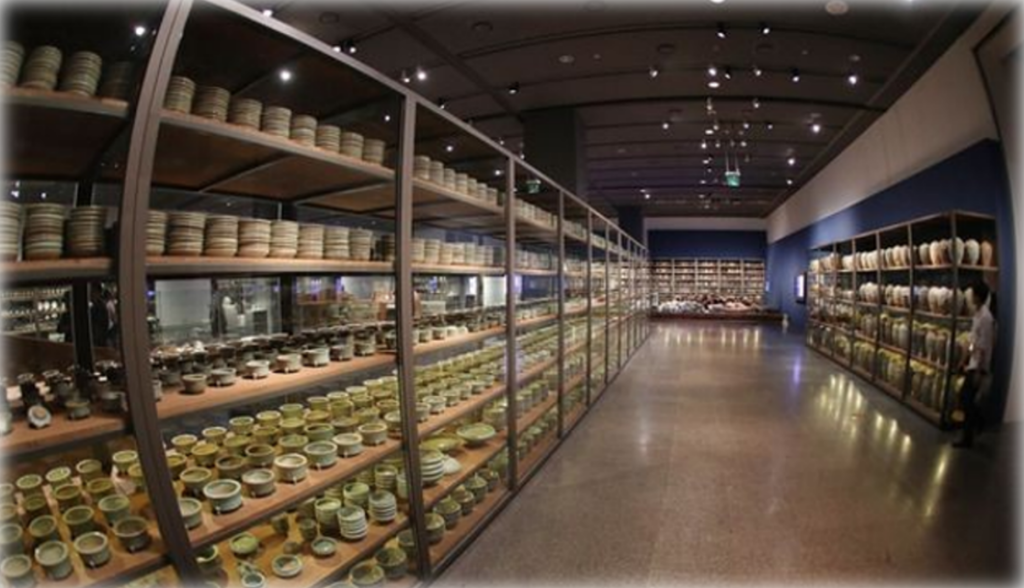
This leaves one last question. What sort or trade have we been looking at? The wooden tags make clear that the pieces were ordered by Japanese customers. They show that it took some 40 days for Chinese merchants to prepare and package ordered items before sailing. Between 30-40 sailors were on board during the voyage. At the time, private trade was discouraged in Japan but there was one exception. In order to pay for their upkeep and repair, temples were allowed to trade. So, this was probably a form of temple trade – with a Chinese ship, possibly manned largely by Chinese sailors, collecting a cargo of goods pre ordered by and for Japanese customers.
I would love to include the Shinan wreck in the Silk Road Virtual Museum. Ideally, I would have visitors take an underwater guided dive tour over a 3D reconstruction of the wreck and then allow them to walk around a photogramed 3D version of the ship itself. I would photogram a dozen of the artefacts, to reinforce the ‘illusion’ of the 2D representations of the rest. I would have a theatre where the archaeologists could retell the story of the wreck’s recovery, the building of the model and the preservation of the finds.
I would link it to the SRVM sites in China and Japan to capture the cultural context, as well as to other contemporaneous underwater sites to reinforce the idea of the existence of a complex international trading network And I would link it to the real-world site of the wreck.
Part of the artefacts from the wreck are ii the National Museum in Seoul but the wreck itself and much of the collection is here:
National Research Institute of Maritime Cultural Heritage
Jeollanam-do, Mokpo-si, 용해동 8. South Korea
http://www.seamuse.go.kr/

